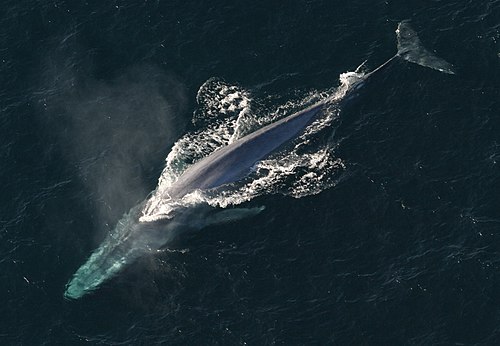
Blue whales are found in all the world’s oceans except the Arctic. They can migrate seasonally: feeding in cold polar waters in the summer and heading to more equatorial waters to breed in winter.
Blue whales primarily feed on small shrimp-like animals called krill. They are filter feeders, using their baleen plates to strain large volumes of water and capture their prey. Blue whales are generally solitary animals, but they can be found in small groups, especially during feeding or breeding seasons. Their social structure is not well understood, but they are known to communicate using low-frequency vocalizations that can travel long distances underwater. Blue whales sometimes swim in small groups but are more often found alone or in pairs. They generally spend summers feeding in polar waters and undertake lengthy migrations towards the equatorial waters as winter arrives. Blue whales typically swim at about 5 miles an hour while they are feeding and traveling, but can accelerate to more than 20 miles an hour for short bursts. They are among the loudest animals on the planet, emitting a series of pulses, groans, and moans, and it is thought that in the right oceanographic conditions, sounds emitted by blue whales can be heard by other whales up to 1,000 miles away. Scientists think they use these vocalizations to communicate and—along with their excellent hearing—perhaps to sonar-navigate the dark ocean depths.
Blue whales are the largest animals known to have ever existed on Earth. Their sheer size and grace in the water are awe-inspiring. Additionally, their ability to communicate over vast distances using low-frequency sounds is fascinating and highlights the complexity of their social interactions.